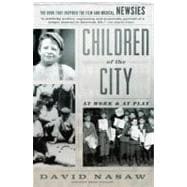
Note: Supplemental materials are not guaranteed with Rental or Used book purchases.
Purchase Benefits
What is included with this book?
| Acknowledgments | p. v |
| Preface | p. vii |
| The City They Called Home | p. 1 |
| At Play in the City | p. 18 |
| Child Labor and Laborers | p. 41 |
| The Littlest Hustlers | p. 51 |
| The Newsies | p. 66 |
| Junkers, Scavengers, and Petty Thieves | p. 95 |
| The Little Mothers | p. 110 |
| All That Money Could Buy | p. 125 |
| The Battle for Spending Money | p. 141 |
| The Children and the Child-Savers | p. 150 |
| Working Together | p. 172 |
| Unions and Strikes | p. 182 |
| End of an Era | p. 204 |
| Epilogue | p. 212 |
| Appendix: A Note on Sources: The Newsboy Studies | p. 227 |
| Abbreviations | p. 229 |
| Notes | p. 231 |
| Index | p. 259 |
| Table of Contents provided by Ingram. All Rights Reserved. |
The New copy of this book will include any supplemental materials advertised. Please check the title of the book to determine if it should include any access cards, study guides, lab manuals, CDs, etc.
The Used, Rental and eBook copies of this book are not guaranteed to include any supplemental materials. Typically, only the book itself is included. This is true even if the title states it includes any access cards, study guides, lab manuals, CDs, etc.